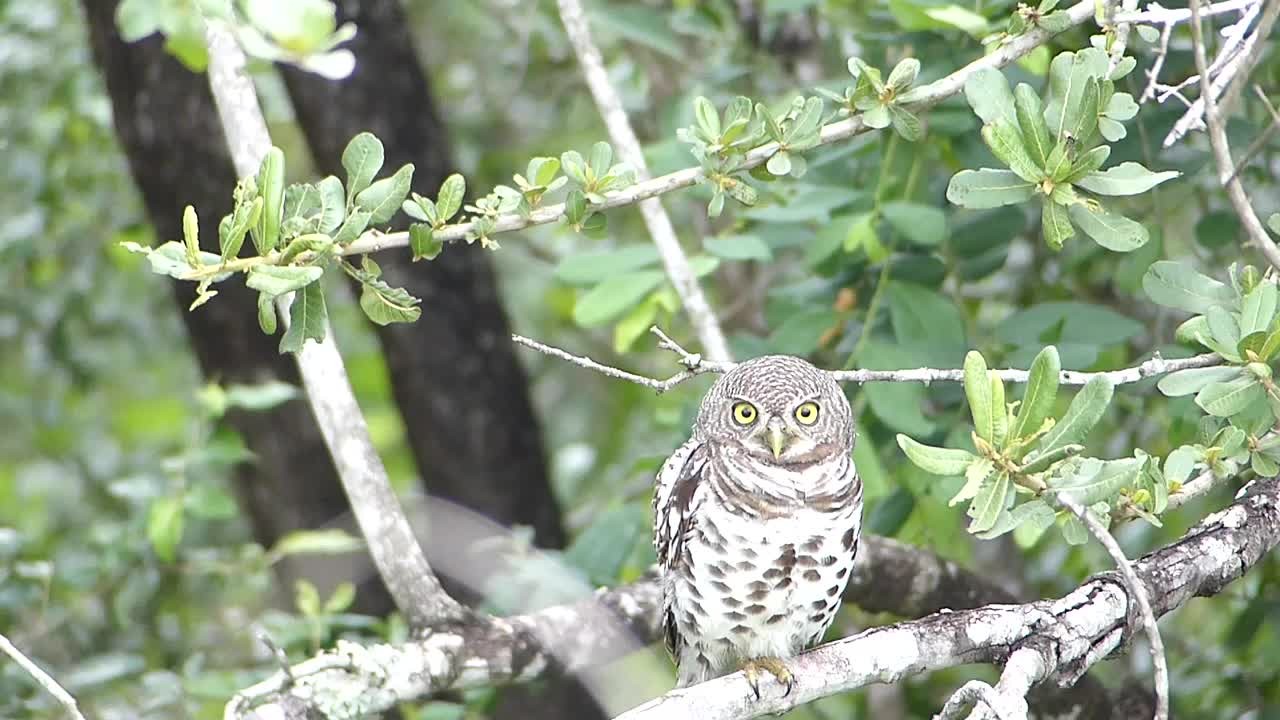African Barred Owlet
A species of Pygmy-owls Scientific name : Glaucidium capense Genus : Pygmy-owls
African Barred Owlet, A species of Pygmy-owls
Botanical name: Glaucidium capense
Genus: Pygmy-owls
Content
Description General Info
 Photo By Bernard DUPONT , used under CC-BY-SA-2.0 /Cropped and compressed from original
Photo By Bernard DUPONT , used under CC-BY-SA-2.0 /Cropped and compressed from original Description
A small owlet that shows some geographic variation (see Taxonomy). The nominate subspecies is greyish brown above with fine buff bars and a narrow white eyebrow, The scapulars and greater wing coverts have white outer webs with dark brown tips and form a white stripe across the shoulder and the folded wing. The brown chest is finely barred with buff and the breast and flanks are white with brown spots. Underwing coverts, legs and vent are white, while the flight feathers and tail are brown barred with rufous. Bill and cere are dull greenish yellow and the eyes, legs and feet are yellow. Length is about 17 cm (6.7 in) and wingspan is about 40 cm (16 in). 
Size
22 cm
Life Expectancy
12 years
Nest Placement
Cavity
Feeding Habits
African Barred Owlet's diet mainly consists of insects like beetles and caterpillars, as well as grasshoppers, small mammals, birds, and amphibians. Its hunting technique includes night foraging. African Barred Owlet exhibits unique preferences for scorpions, skinks, and frogs.
Habitat
African Barred Owlet is typically found spanning across gallery forests, woodlands, and the edges of forests, often venturing into areas of secondary growth. They populate contiguous woodlands and riparian forests, preferring edge habitats that lie in open country. Generally, african Barred Owlet resides in environments situated below 1,200 meters in elevation. Subspecies of african Barred Owlet are adapted to specific niches, with some favoring the dense vegetation of lowland and montane forests, while others occupy coastal forests and adjacent woodlands, consistently below the 1,200-meter elevation benchmark.
Dite type
Carnivorous
General Info
Feeding Habits
Bird food type
Distribution Area
G. capense is endemic to Southern and Eastern Africa from Kenya and the Eastern Cape to Western Angola. The African barred owl occurs in open habitats with trees such as gallery forest, woodland, forest edge and secondary growth. 
Species Status
Not globally threatened.
Scientific Classification
Phylum
Chordates Class
Birds Order
Owls Family
True owls Genus
Pygmy-owls Species
African Barred Owlet